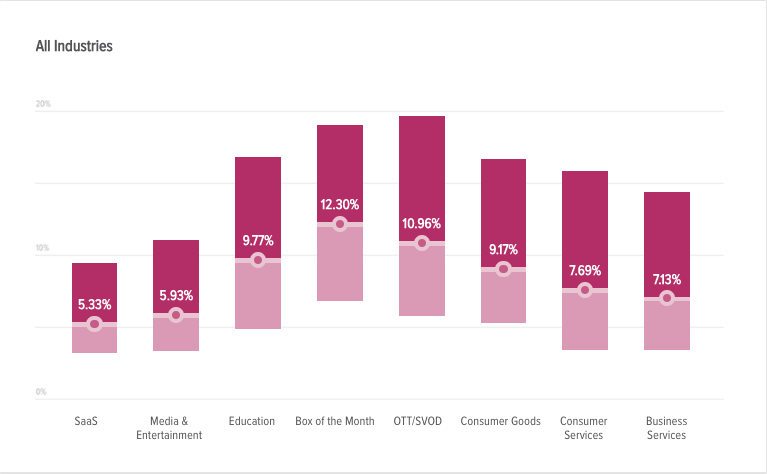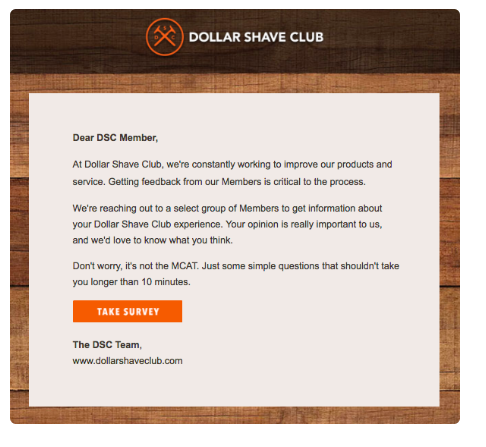Your marketing might be awesome. You have a beautiful website and you’re starting to get those coveted conversions.
Still, there’s a more ominous metric you need to be tracking closely–churn rates. Customer turnover. Attrition. Defection. Whatever you call it, churn poses a significant threat to your bottom line.
Customer turnover. Attrition. Defection. Whatever you call it, churn poses a significant threat to your bottom line. Click To TweetWhich makes us wonder, why, exactly, so many marketers blow their budgets on customer acquisition or top-of-the-funnel content.
While it is essential to spend money on acquisition, it shouldn’t be the sole focus. Loyal customers that stick with you for the long-term, that’s the secret to growing your business. These people provide a consistent revenue stream–and if they’re happy with you, will share their experience with family and friends.
When you’re scrambling to get new customers all the time, you’re spending money and scrambling for new leads all the time.
With that in mind, here’s a little more about how to fight against churn and keep loyal customers coming back for more.
First Understand What an Acceptable Churn Rate Looks Like
If you’re concerned about churn, take solace in the fact that you’re far from alone.
Every company experiences some degree of churn. Customers stop using services for all kinds of reasons, many of which have nothing to do with you. But, high churn makes it challenging to expand—and losing customer accounts each month can damage your reputation and deplete your resources fast.
That said, you’ll need to develop a baseline before you start improving your efforts. Familiarize yourself with your numbers, so you can start growing.
While there are a ton of different ways to look at churn, there are two main types of churn you should watch out for—revenue churn and customer churn.
The easiest way to calculate your customer churn rate is to follow this simple equation:
- Starting customers – customers left at the end. Let’s say you start with 120 customers and end with 98. You’ve lost 22 customers.
- Then, divide 22 by 120. 22/120= 0.183. So, you have an 18% churn rate.
Determining your revenue churn is a bit more complicated.
- Start by looking at the amount of monthly recurring revenue (MRR) you had at the beginning of the month and compare it with the MRR you have at the end of the month.
- Say you started with $350,000 in MRR at the beginning of the month and closed the period with $290,000 in MRR and made $80,000 in upgrades from existing customers.
- Run your calculation:
(($350,000 – $290,000) – $50,000)/$350,000 =
($60,000 – $80,000)/$350,000 =
(-$20,000)/$350,000 = -5.7%
New sales during that time won’t count toward your churn rate, as your goal is to see how many people are dropping off. Those upgrades do count, though, as they’re coming from existing customers.
Now, we should point out that several other factors come into play.
- Seasonality
- Timeframe
- SaaS vs. e-commerce
- Cancellations
- Sample size
- New signups
You’ll also want to determine your churn rate by segment. Run these equations on each type of customer. This process will help you identify each customer’s lifetime value, and set the stage for a retention strategy.
Different industries have different churn rates, too. For example, the median churn rate for a SaaS product is going to be a lot lower than a monthly beauty box. You’re looking at need versus little luxuries.
Reach Out to Your Customers
According to a survey conducted by Oracle, lousy customer service is one of the main reasons users leave you in favor of a competitor.
Every business has a blind spot standing in the way of growth. Maybe you need to improve your customer service or improve your site’s UX. Whatever the case, you need to get proactive about finding out why customers are leaving.
Talk to them about what you’re doing wrong and what you can do to make things right.
So, if you’re looking at some scary drop off rates, start by reaching out.
A few ways you can do this:
- Send a customer exit survey
- Call to follow up
- Or, send a personalized email
Surveys are a great way to get some actionable data, especially if you send them to several customers. But, you need to make them easy for users to fill out. Keep it simple by asking for a rating — like a five-star rating system and leaving a field for open-ended comments.
But, sometimes it pays to be old-fashioned and give your customers a call on the phone. See, it’s the little details that customers appreciate—and calling to check in is about as personal as it gets.
Or, send an email. Many customers prefer this method of contact anyhow. The below example, from Dollar Shave Club, is short, sweet, and gets straight to the point.
Define a Clear Onboarding Process for New Customers
If you’re in the SaaS biz, you know that new customers can get easily overwhelmed with getting started. If a customer can’t figure out how to navigate through the process right away, they’ll drop like flies.
The top two reasons for customer churn are as follows:
The customer doesn’t understand your product or they aren’t getting any value from your solution. Unfortunately, up to 60% of users will download an app one time and never log in again.
It makes you rethink the idea of a conversion as a big win.
So, as you can imagine, customer onboarding is deeply important, as it helps set the stage for your relationship moving forward. Oh, and it helps boost lifetime value and reduce churn.
To combat churn, you’ll need to help customers achieve success with your product. Start out with a few goals:
- Get users set up
- Establish habits. Ideally, they’ll be using the product more than one time that first week.
- Demonstrate value. How can you help this person, specifically?
Schedule a Walkthrough
If your service is something more complex like a CRM or an accounting tool—consider allowing new users to schedule a live demo.
That extra assistance gives customers a one-on-one tutorial, as well as the opportunity to ask questions. On your end, taking the time to explain the product lets you show off how, exactly, your solution applies to their specific pain points.
Build a Knowledge Base
Guide new users through the process to combat confusion. That’s why so many SaaS companies have such a robust knowledge base — complete with getting started videos, how-to-guides, and community forums.
Create documentation for all of your features and technical specifications, as well as a welcome email series.
Personalization Goes a Long Way
Another approach is offering a personalized message right when a user signs up.
Customers will go through different phases after they initially sign up for a service. Sending the right email at the right time can help you get ahead of churn rates. Automated emails, like this one from Buffer, can add a little push for customers to take action.
Always Be Improving
Businesses always need to be looking ahead. Get complacent, and customers will look toward your more innovative competitors.
As such, always be tracking trends and technology advancements—and continue to get feedback.
If you have a marketing automation tool, for example, you’ll need to ask for feedback from customers constantly—is the tool fast enough? Are features keeping pace with market standards? You get the idea.
Additionally, you can’t stick your head in the sand when it comes to competitive analysis. Instead, you’ll need to track competitors on an ongoing basis.
- What customer service offerings do they have?
- Is there live chat enabled on the site?
- Do they have a well-stocked library of resources?
- What are their prices like?
Finding these things out is as simple as poking around their websites. There’s no excuse.
Taking cues from the competition can serve to inform your strategy—aim to do better and loyalty will follow.
Wrapping Up
In the end, we know that churn can hinder your ability to grow. Combatting customer drop-offs means staying on top of your customer service offerings, as well as collecting data and measuring success.
That said, dealing with all this data can be overwhelming. While customer retention rates are easy to determine, Tall Cube can bring more expertise to the table–and uncover the “why” behind your churns.
Contact us today to learn more about our data-driven approach to marketing.



